A brief program note / reminder first. Camp Tucson is this weekend. Come on out and ride.
Back in 2006, somehow Lee Blackwell and I convinced ourselves that riding the Camino Diablo was a good idea. I think the Pugsley fatbike was in its infancy, and of course Mike Curiak and other AK superheroes had their own fatbikes, but we did not. I spoke to a Game and Fish officer who told me that the roads are so sandy out on the Camino that sometimes he feels like getting out of his truck and setting it on fire. Arranging shuttle logistics with a friend led to us doing the ride supported, which was probably a good call at the time. With regular tires and no bikepacking gear, we walked some, but squeaked on by.
I always wanted to return and ride unsupported. More than anything I wanted to return, because it’s a place that captures the imagination like no other.
Now 2014, Eszter and I had fatbikes collecting dust. I saw a small window in an otherwise hectic event schedule, and we went for it. It was time to get some fresh dust — no, sand — on these bikes!
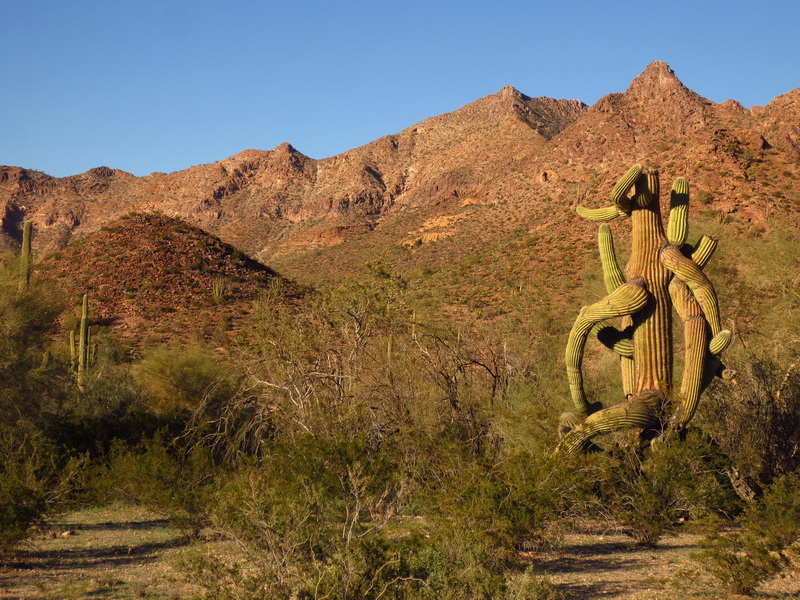
twisted arms in the growler mnts
An early start was not to be after a slow cut of my tether to the computer, driving to Ajo and obtaining permits from the Game and Fish office. The nice lady at the counter asked us if our mothers knew what we were doing. Mine didn’t — mostly because I hadn’t had time to check in or even mention our somewhat last minute trip. It was clear that they only ever issue permits to people touring the road by motorized transport, so they weren’t quite sure what to make of us.
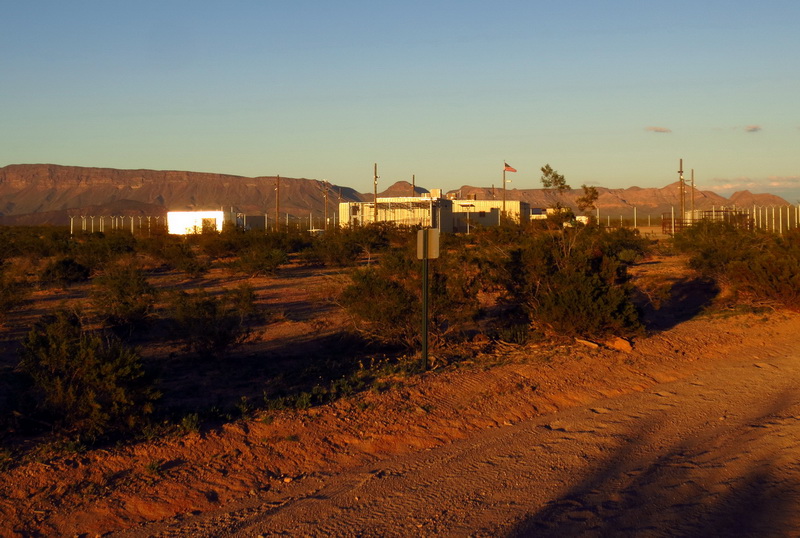
border patrol outpost
The Camino runs right along the Mexican border, which means smuggling and trafficking “may” be encountered — in the same way that other illegal acts “may” be encountered anywhere else in the world. The border patrol would be the only other people we would encounter out on the Camino.
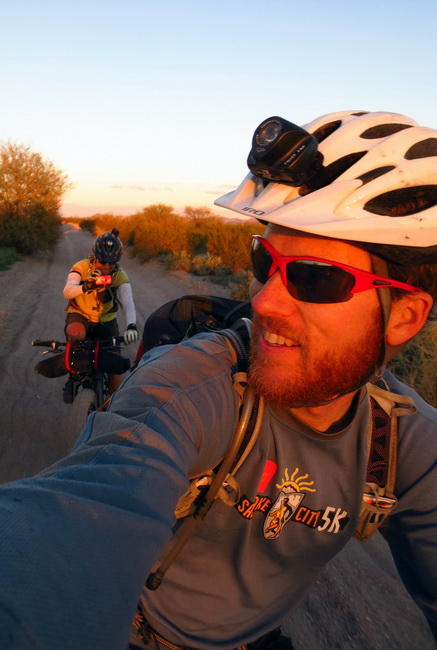
Which is to say, it was delightfully empty.
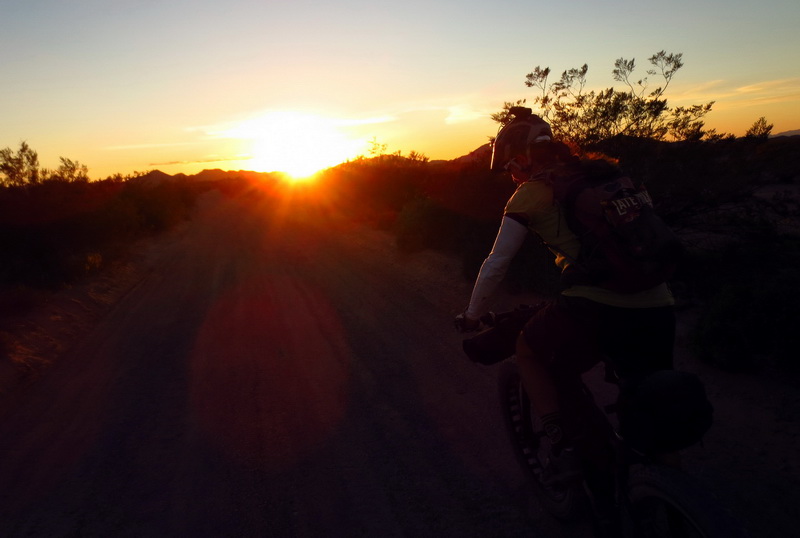
We rode straight into the deep orange of the falling sun.
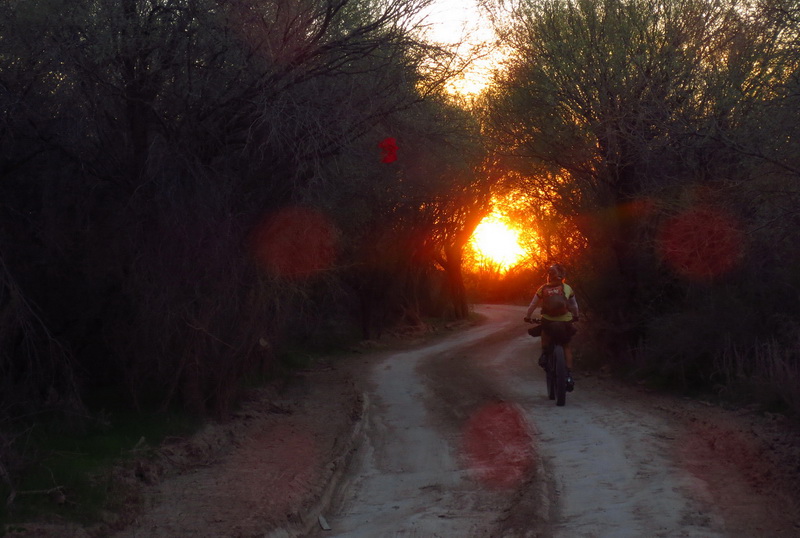
Through curious groves of thick vegetation, in an otherwise desolate land.
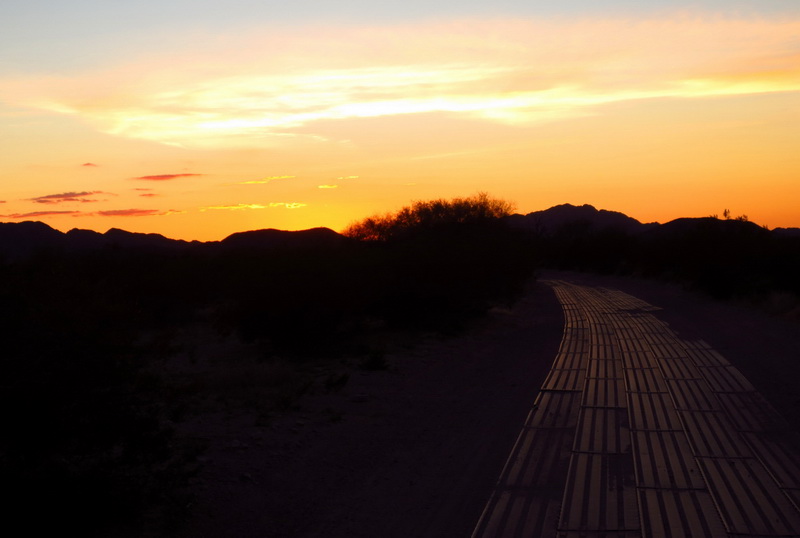
A place where very little evidence of man can be found. There are no cattle guards, no powerlines, no radio towers, no fences. Just a sandy ‘trail’ that had been there for centuries. Oh, and some temporary airstrip pieces used to shore up the road in the sand!
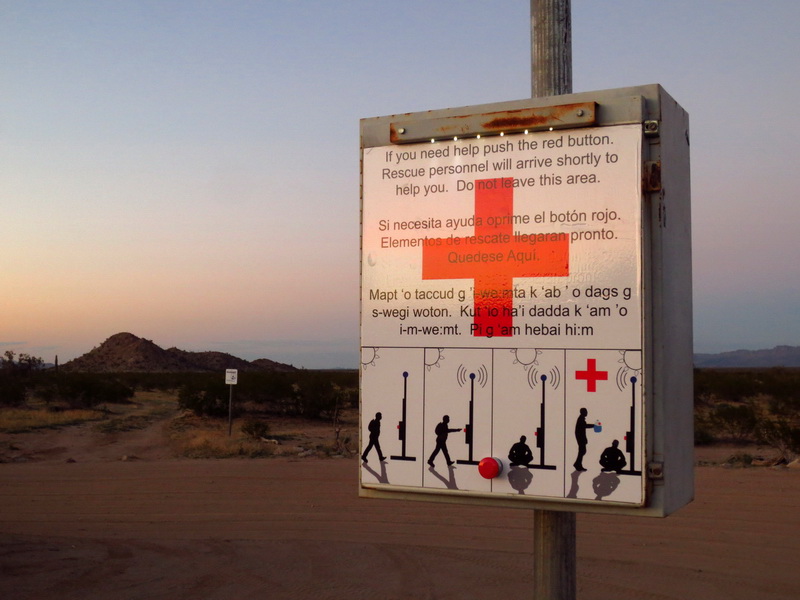
And the occasional panic button. I’ll wager that the agents that arrive will be pointing something other than a gallon jug at weary crossers, though.
We rode on into the night, enjoying what seemed to be an endless twilight. The road had been bladed flat by the border patrol, meaning the surface was super consistent. We could ride without lights, even in the sand.
Diving into micro-washes, we’d be overwhelmed by the fragrance of desert flowers. It was unmistakable.
A border patrol agent came by as we were about to nod off to sleep. I asked him if we were at a good spot to camp. He thought so, and seemed to be more concerned about the real danger of the borderlands: agents driving like idiots (his words). He told us there was a shift change in the AM, but if we could get 10 miles down the road, we’d avoid it. That was good advice, though every agent we encountered was driving quite slow. In fact, we overtook them sometimes.
Sleep was not deep, but it never is on the first night of a bikepack, and with minimal gear. A nice night out, no doubt.
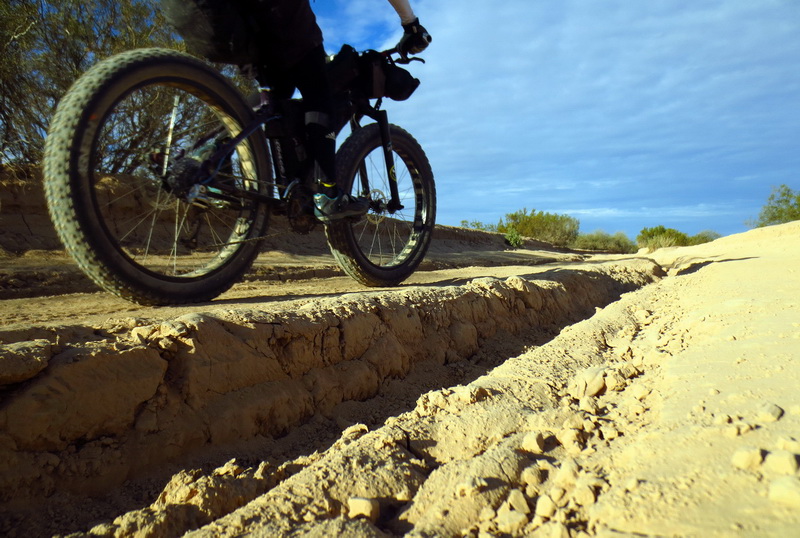
We hit the playa in the morning. In 2006 I had encountered silt beds and very fine dust here — the kind of dust that permeates everything. It is no place to be when it rains, but rain had been kind to it for us — no dust and easy sailing.
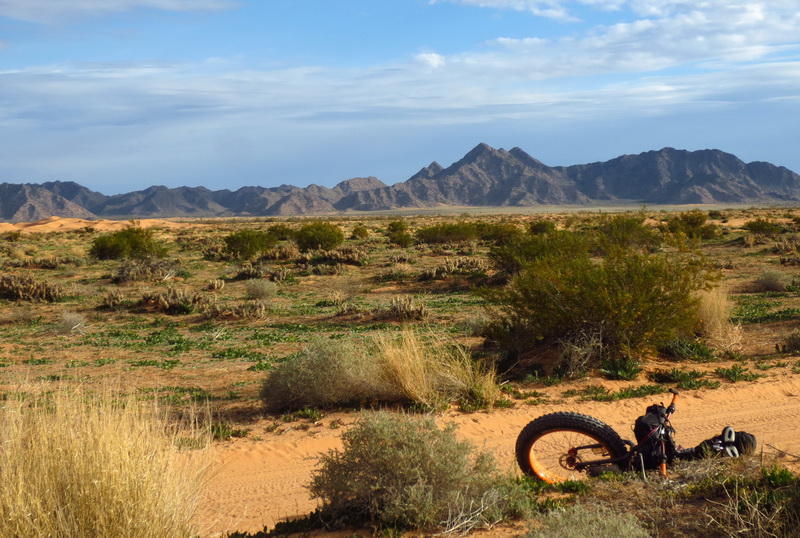
It finally started to get a little sandy as we crossed the Tule desert. I was getting anxious for some real sand to put my huge tires to the test.
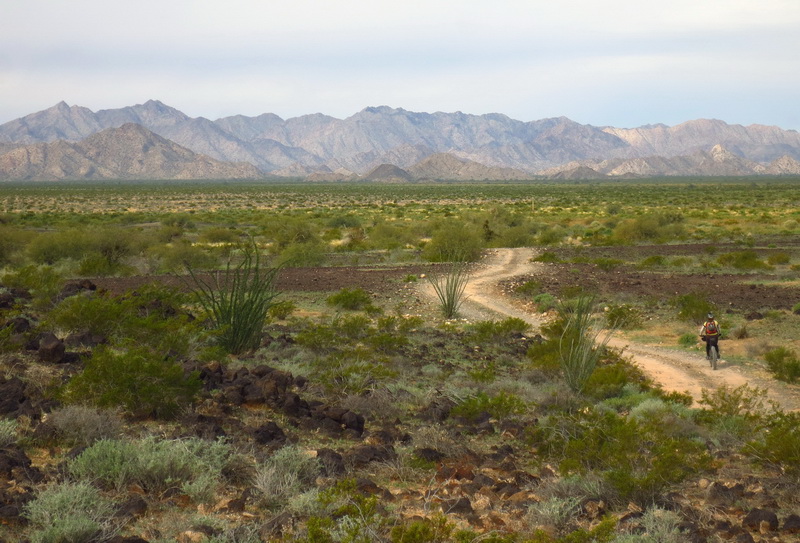
The northern extent of the Pinacate lava flow makes for some bumpy riding on a rigid fat bike, and one of few places you can travel without leaving obvious tracks.
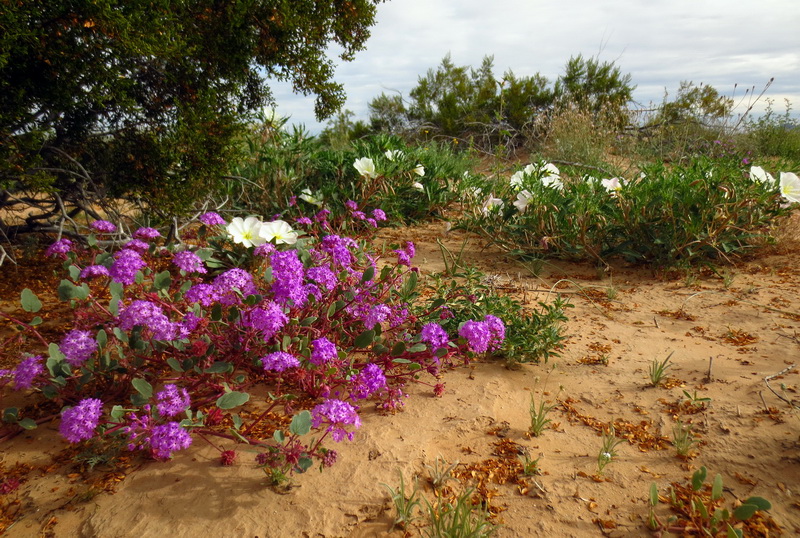
Flowers were blooming in full force, explaining part of the wonderful fragrance we were hitting in the washes the previous night. Quite surprising given how dry winter had been. All thanks to December rains.
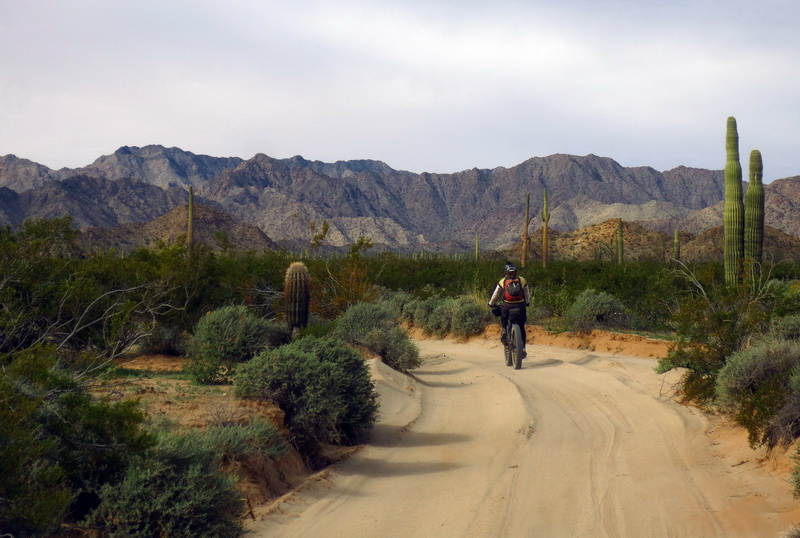
Alrighty, here comes some real sand, approaching the Cabeza Prieta Mountains. No challenge at all on Lou and Bud tires.
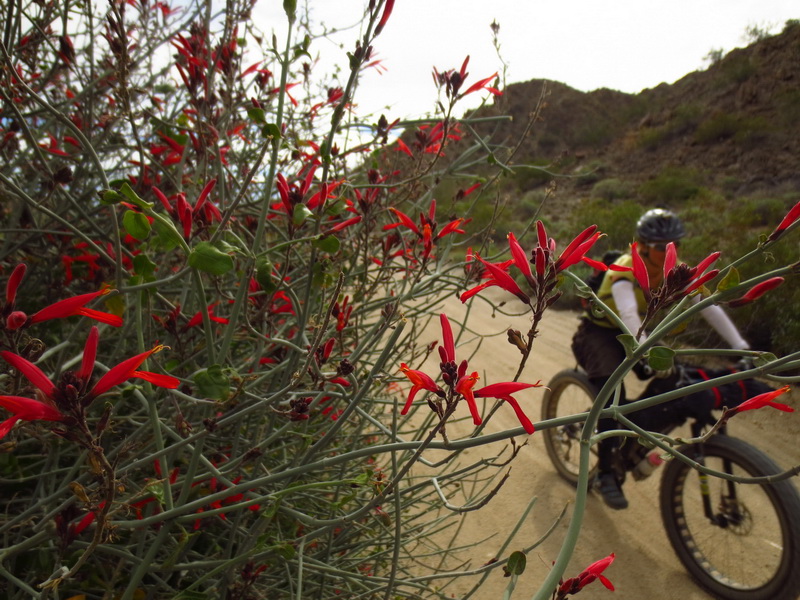
Eszter’s smaller tires seemed just as up to the task. Mine were overkill. I’d accelerate away from her in the deepest pits, but she was running a speed or so faster than me on the “climbs.” I blamed it on the giant tires, but she’s also just so strong!
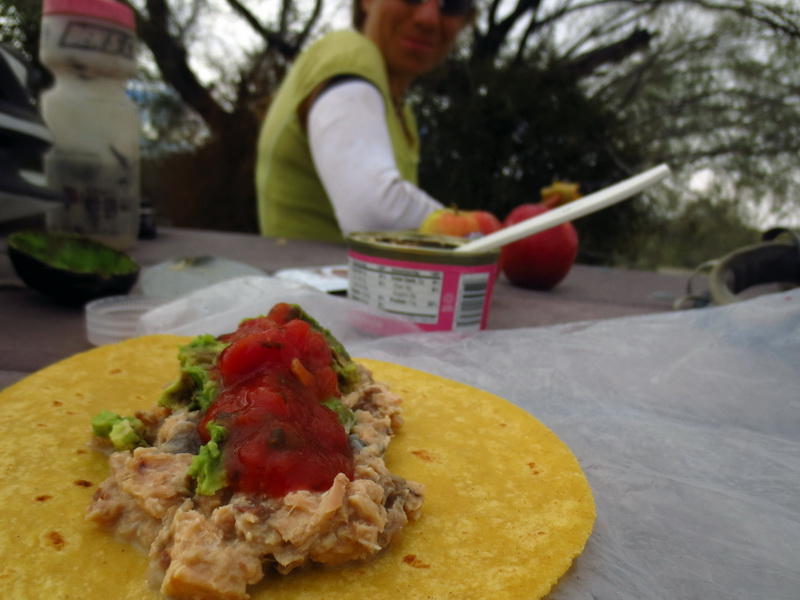
I was more than ready for lunch when we reached Tule Well. It had been a nearly undetectable but very long climb, and I was still getting used to the Spiderflex saddle (more on that later).
I shouted in joy as I found the tortillas that I thought had fallen out of my handlebar bag early on day 1. Salmon tacos are a go!
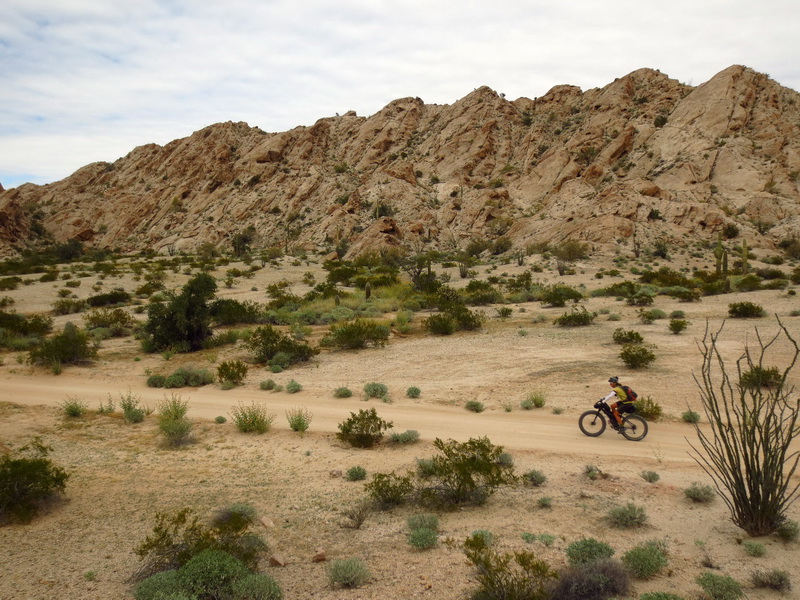
Beautiful scenery is a go, too! The Cabeza Prieta mountains are mostly solid rock, enough to make a rock monkey drool. It’s wilderness on 50′ of either side of the road, so drool is about all it can come to.
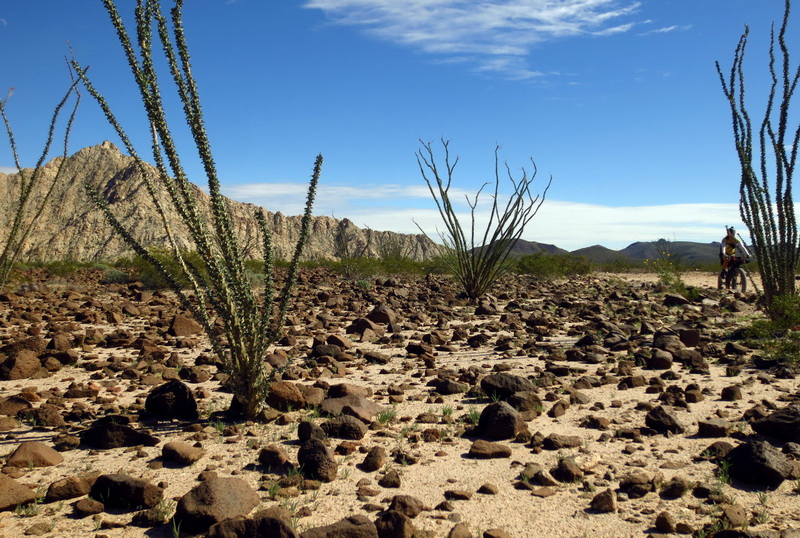
One could ride through such mountains for days and not be bored, but it was on to the next valley.
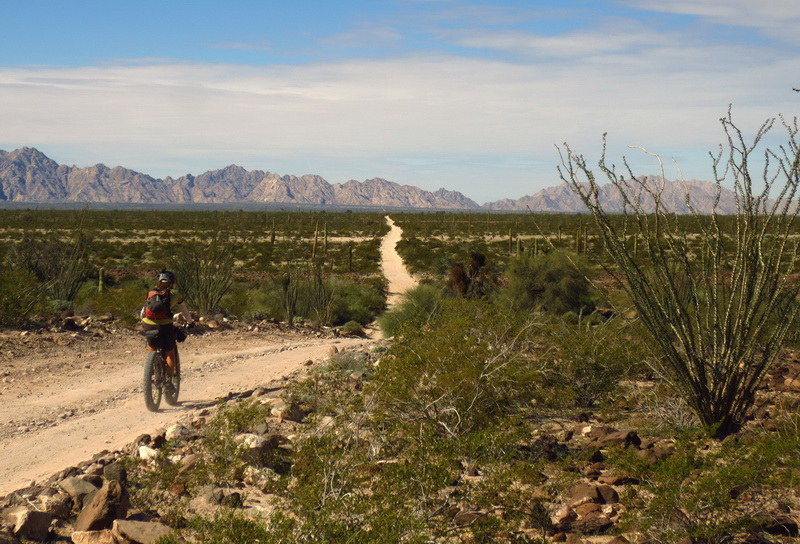
It was the one that I remembered being the sandiest. Lee and I walked here. The Lechuguilla Desert.
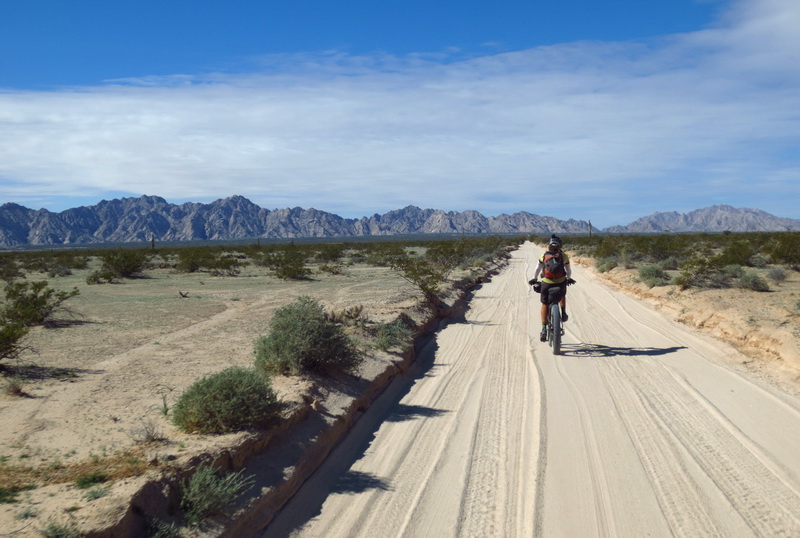
Again, no match for the fatties. Solid riding, smooth sailing.
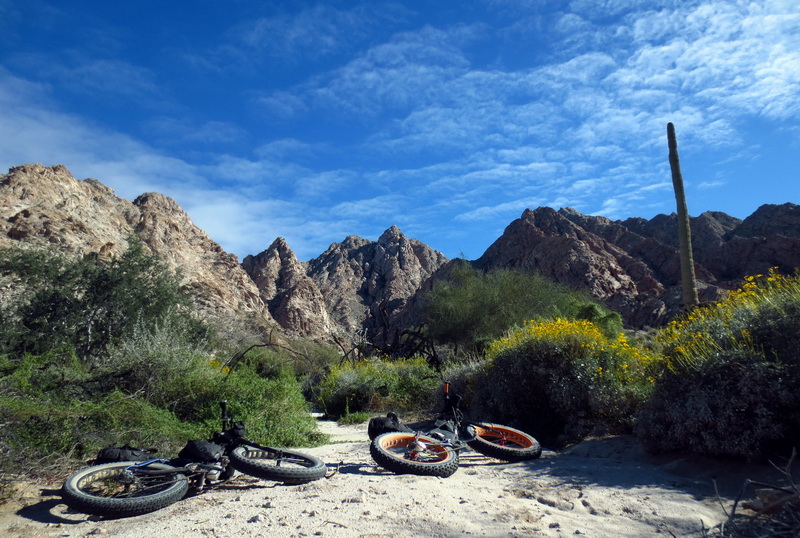
Beautiful spot in a hidden canyon that looks like it might be the Tinajas Altas, but it isn’t. I followed our 2006 GPX track to the same deadend that we took back then. Sometimes the GPX treasure chest comes back to bite you!
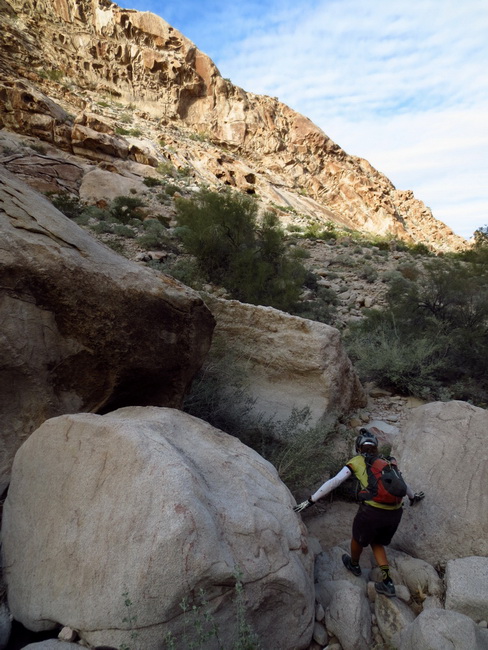
I had forgotten that the actual Tinajas Altas (high tanks) are just off the route, a very short spur. The high tanks are very deep natural pools that hold water even in the hottest and driest of conditions. Supposedly many travelers of old died at the base of the Tinajas, having made it here, but lacking the strength to climb up to retrieve water.
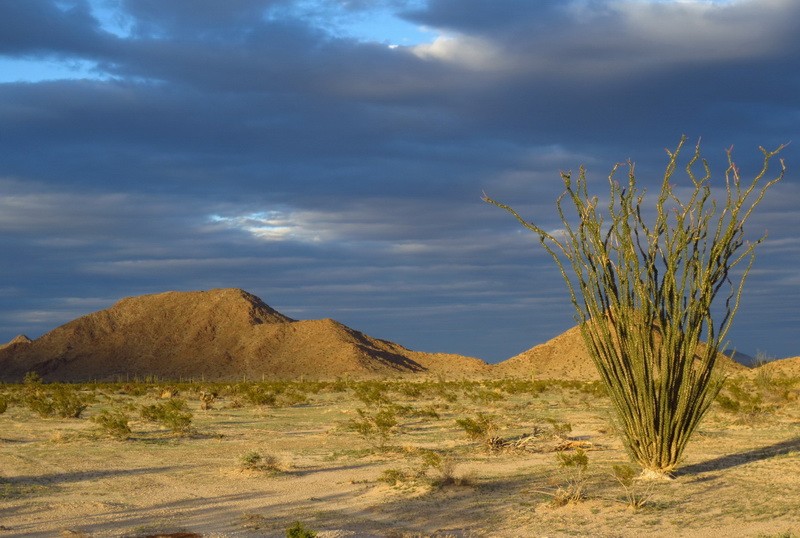
The Camino has a deadly and storied history, beyond the scope of this blog. Well worth digging into if you want to travel the Camino.
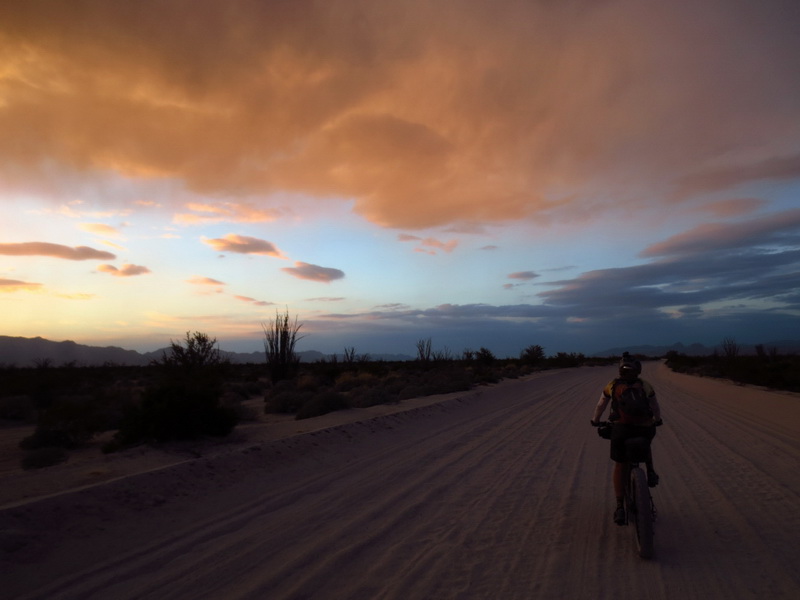
And, you should, because it’s just simply incredible out there. I never thought I could enjoy riding a ~flat dirt road so much.
The night bled orange. The road grew wide. Our smiles grew wider. We approached the town of Wellton.
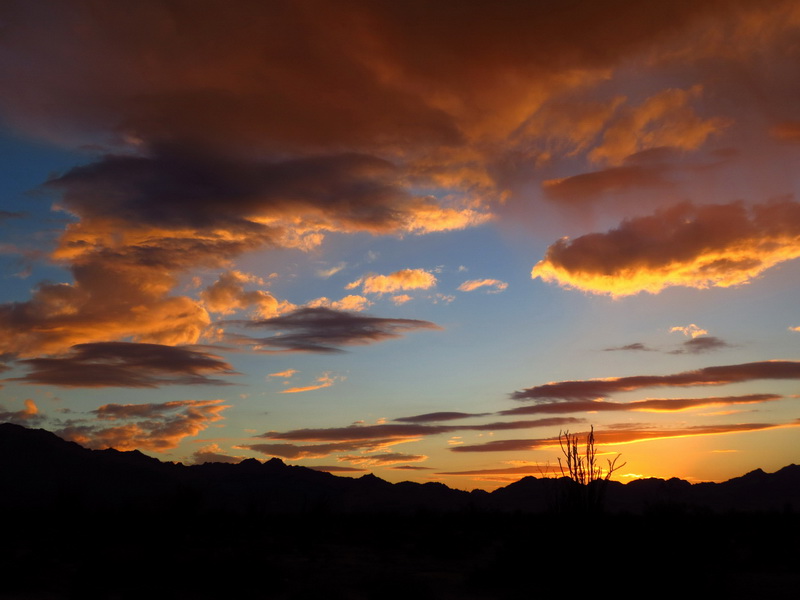
We debated our options, opting not to risk an unmapped powerline shortcut into town (that does pan out, turns out), and opting to head into town for dinner and a motel room. Both were good choices. The carne asada at the newly opened mexican place next to the gas station was first rate.
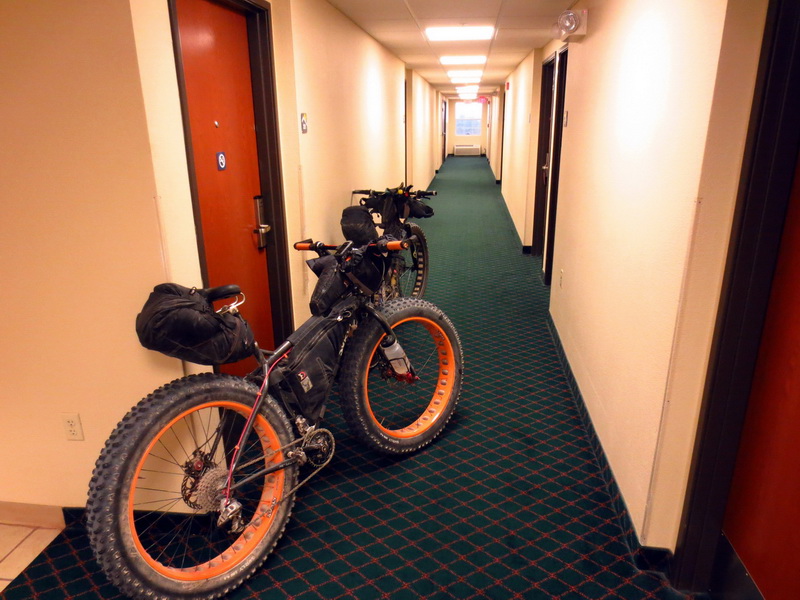
Probably the first fat bikes to stay at this motel-for-the-local-golf-course. The saddle I was trying out is a noseless spiderflex, which I heard about through the inimitable Dirt dot Kurt. It took some experimenting to get it set up right, but I think it’s a dead-on no-brainer for dirt road touring. It was dirt dot kurt style touring, though as I said, he’s impossible to imitate, and in a class all his own.
We scored hotel breakfast waffles and breakfast burritos to go, hitting the road early enough that kids were out waiting for school buses. My butt has never been so happy to sit on a bike seat after 100+ miles of dirt roads, some wash-boardy. I could get used to this.
We paralleled I-8 for a while to Tacna, looking towards a different return to the Camino, another route I had not been on. We were in full tour mode, which means you never pass up a source of calories you aren’t carrying. Chocolate milk, a fruit pie, some iced tea. Oh yeah, touring.
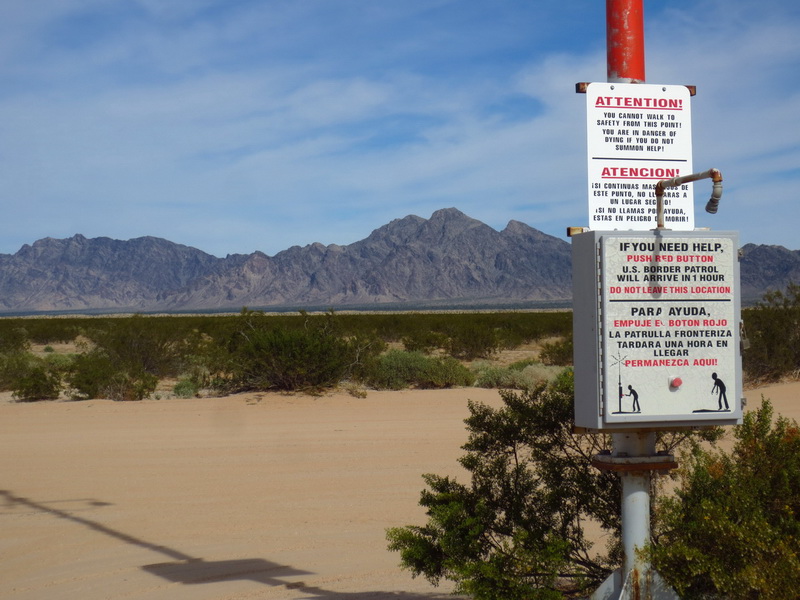
An interesting variant on the panic button, this one apparently for extra-terrestrial beings making undocumented crossings of the cosmos and somehow landing in the Mohawk Valley.
Once we left the freeway we didn’t see a single vehicle, not even Border Patrol, all day. We did see a dust cloud from a border agent, though, that went to check out the panic button above just after we left. We may have triggered a sensor of some kind.
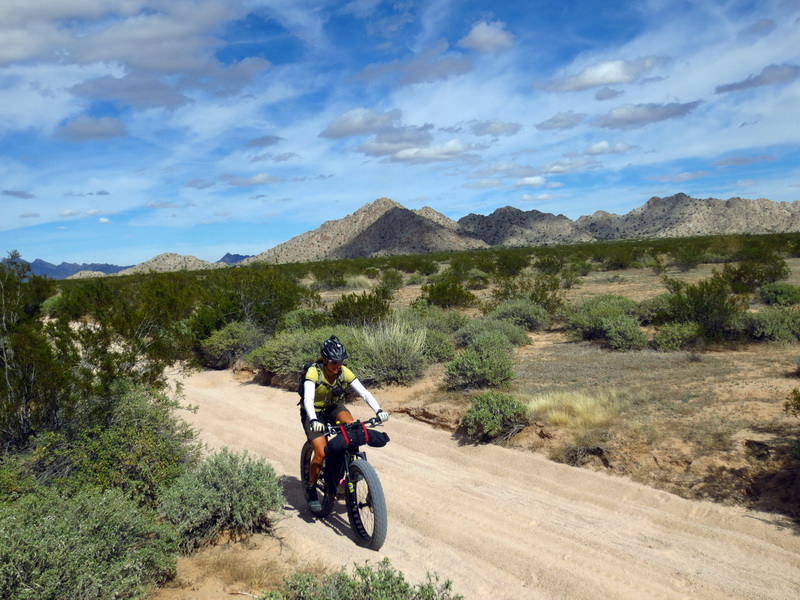
The road quickly deteriorated at the boundary for the wildlife refuge. The road runs perpendicular to the border, so there is no reason for the border patrol to drag it with tires. The result is a bumpy and deep sandy road. I reckon we would have walked for many miles here on regular bikes. On fat bikes, it was only a little slow, and progress was hard to measure. But it was never demoralizing.
Traveling by fatbike on the Camino started to remind me of touring the Iditarod Trail to McGrath in so many ways. Of course I was riding the same bike, and had a lot of the same gear. It was on variable surfaces. It was in a very remote area, with little traffic and almost no structures. The grades were mellow — almost undetectable as to whether you are going up or down. Yet that distinction makes a huge difference in the effort and speed with which you travel. Slight uphill = slow. Slight downhill = fast and effortless. The sand showed so much of the history of what had happened recently, just like snow does. We could see tracks and speculate over what had happened or who had been by. The condition of ‘the trail’ was highly dependent on who and what had traveled before us. Just like Iditarod depends on snow machines, when the border patrol drags the road, you’ve got good trail. Otherwise, not so good. The valleys are flat, but the mountains big and dramatic. They seem ever so far away, and like you’re never going to reach them. Then all of the sudden, they are right in your face.
It made me miss riding in Alaska, strangely enough. And made me wonder why more people don’t, and haven’t, ridden fat bikes down here.
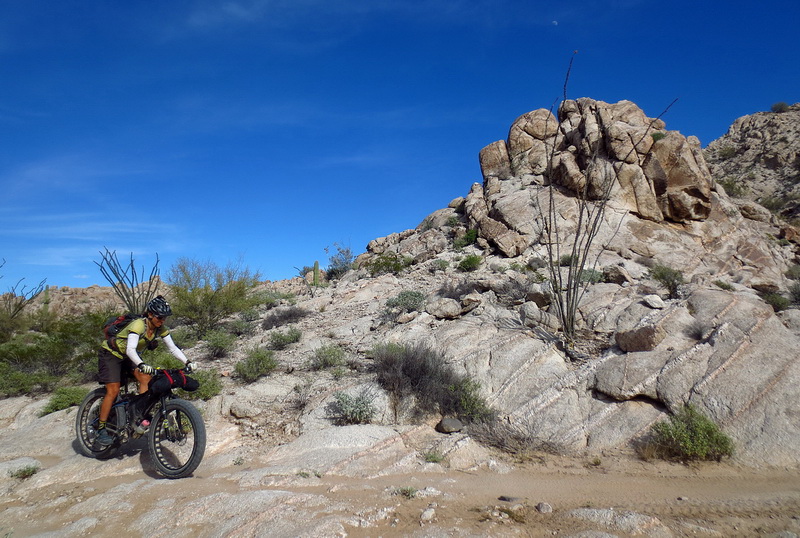
After a bit of a slog, we reached the northern edge of the Cabeza Prieta mountains, where the trail firmed up. Actually, it turned briefly technical!
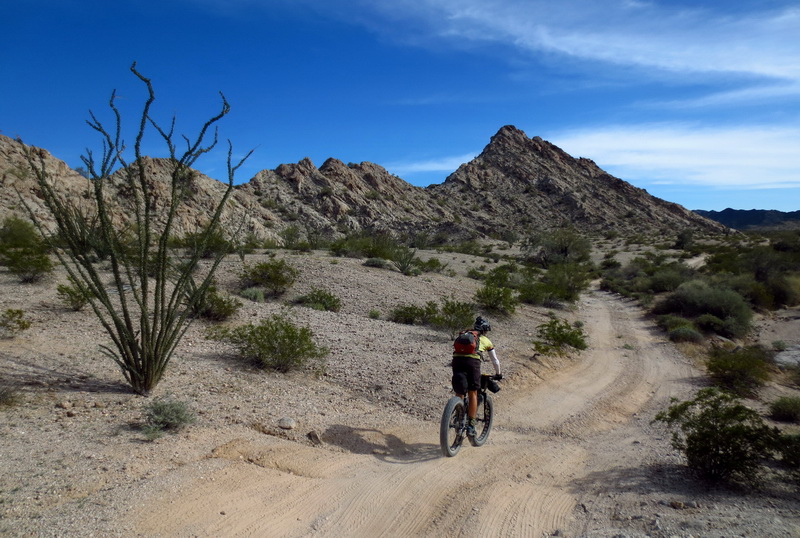
But mostly just gloriously firm 2-track, through beautifully tilted mountains. We rolled through Christmas Pass, but wouldn’t have noticed it was a pass at all, but for the sign telling us it was so.
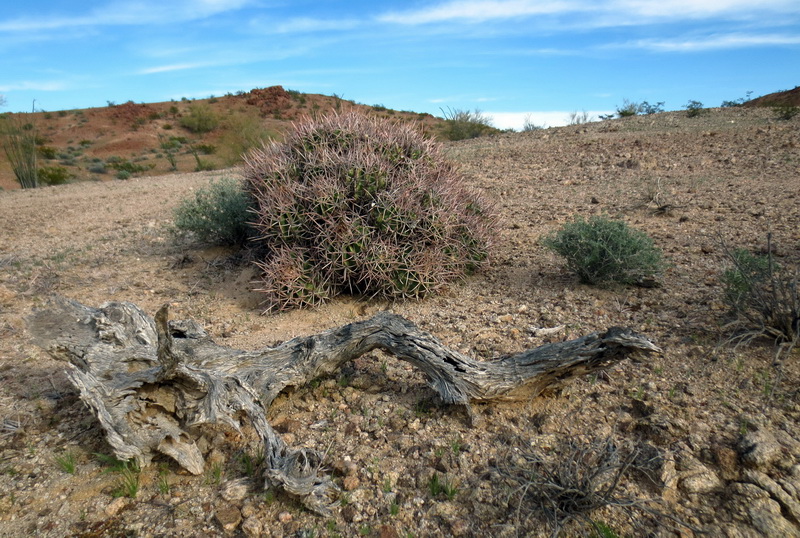
I spied this interesting multi-barrel cactus, and then spent the rest of the trip looking for another. I didn’t see a single other one.
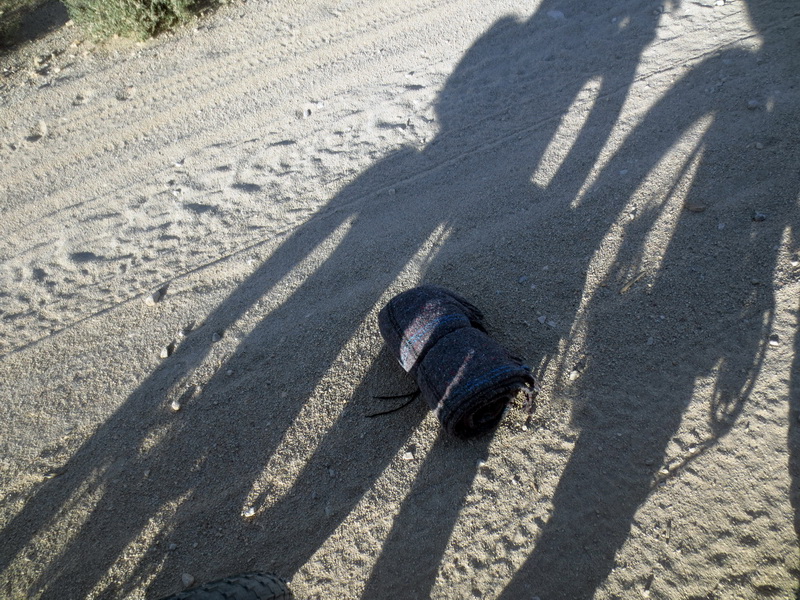
But this was perhaps a stranger sighting. A carefully rolled and seemingly brand new blanket, in the middle of the road, with no foot prints anywhere around it. We were on the out-and-back portion of our lollipop route, and there were no blankets 24 hours ago. Did it fall off someone’s truck? Dropped by crossers whose tracks were somehow erased? Set up by the border patrol as a trap? The nights would be quite cold out there without a sleeping bag. It was so curiously placed right in the middle of the road, and exactly perpendicular to it.
We decided not to linger too long, trying not to let our imaginations run wild. We started paying more attention to the patterns in the sand. We found several washes full of foot prints that either weren’t there 24 hours ago, or we hadn’t noticed. But didn’t actually see anyone, not even the border patrol.
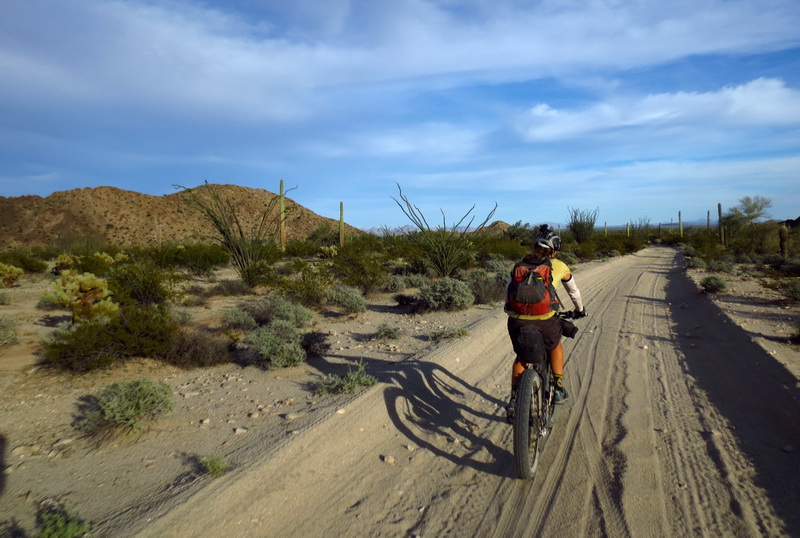
What are those crazy tracks we see in the sand? Oh, it’s a Lou track! There are fat bikers out here!
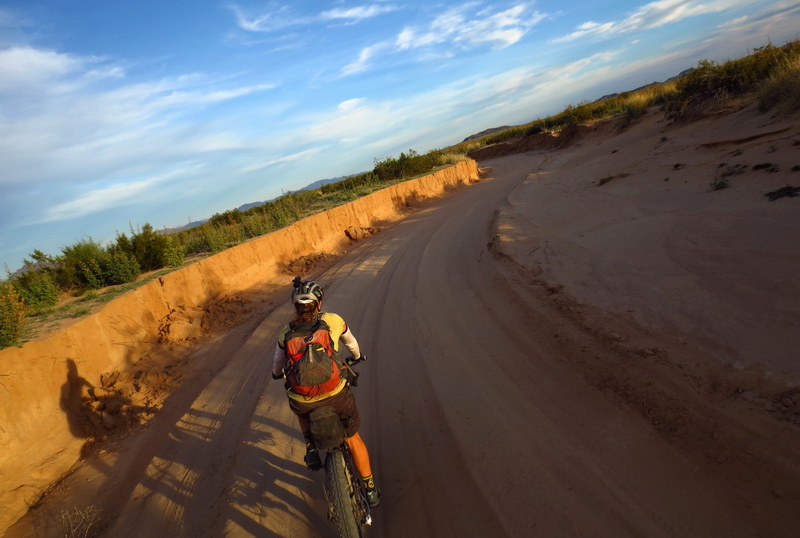
There’s also incredible country out here. Instead of a long slog up a sandy sunken road that feels like a wash, but isn’t, we had a blissful and silent cruise across the Tule valley.
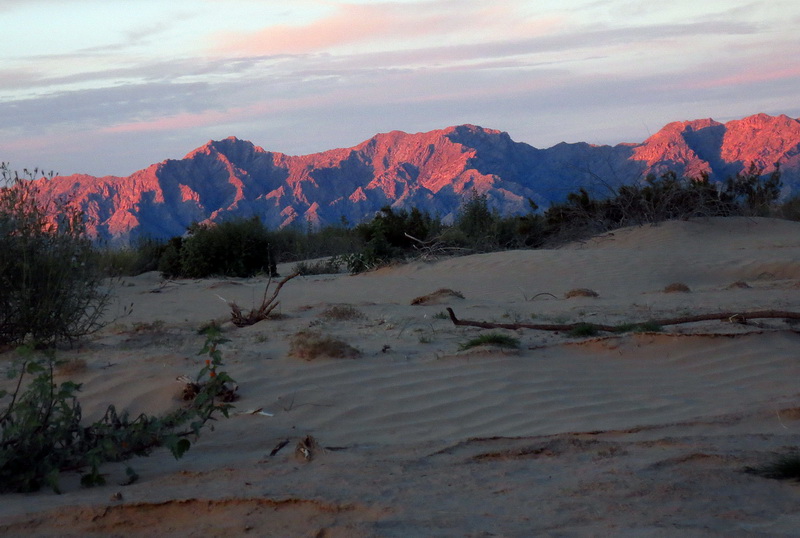
The sun was at our backs, lighting up the strange and unknown mountains all around us. If so few people ever even travel the Camino, how untouched and remote are the tops of these mountains?
To think of all the untold epics that have taken place out here.
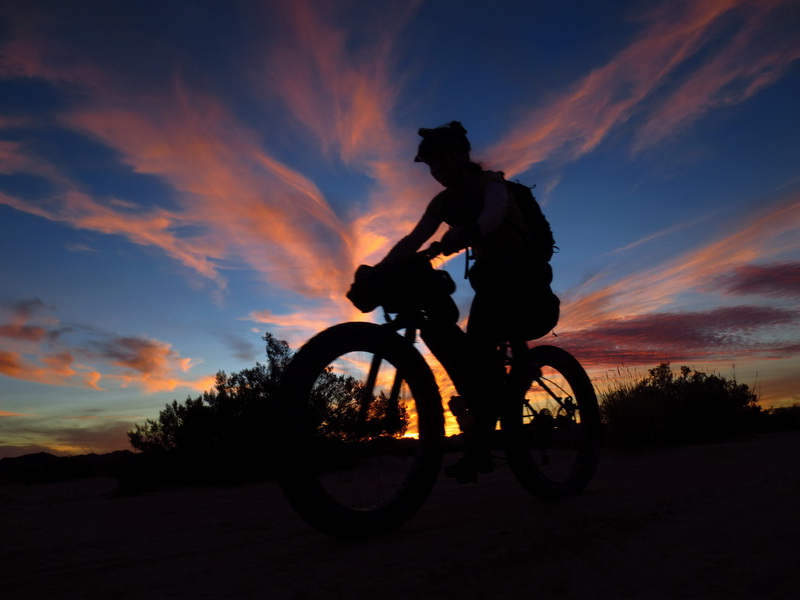
And then the sky blew up behind us. Forward progress was stalled into 200′ increments. Team photo style, expressions and exclamations of gratitude.
There was a part of me that was wondering, as the sun neared the horizon, if we hadn’t pressed our luck in trying to cross the Camino twice. Was it really wise to head right back out here, with only the water we could carry and with the likelihood of needing to spend another night right near the border? When my tire started flatting just before sunset, it was hard not to feel a little helpless.
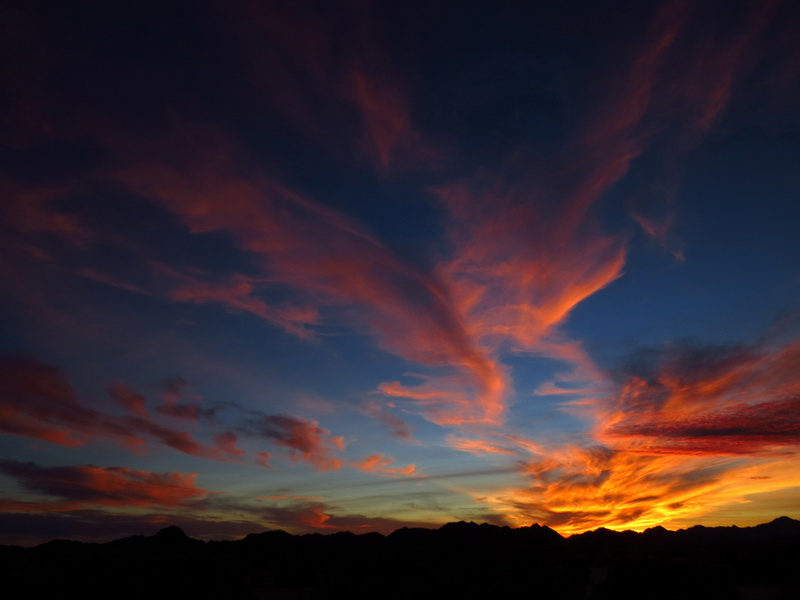
All doubts were silenced in the magic evening air, the sky afire. Nowhere I’d rather be.
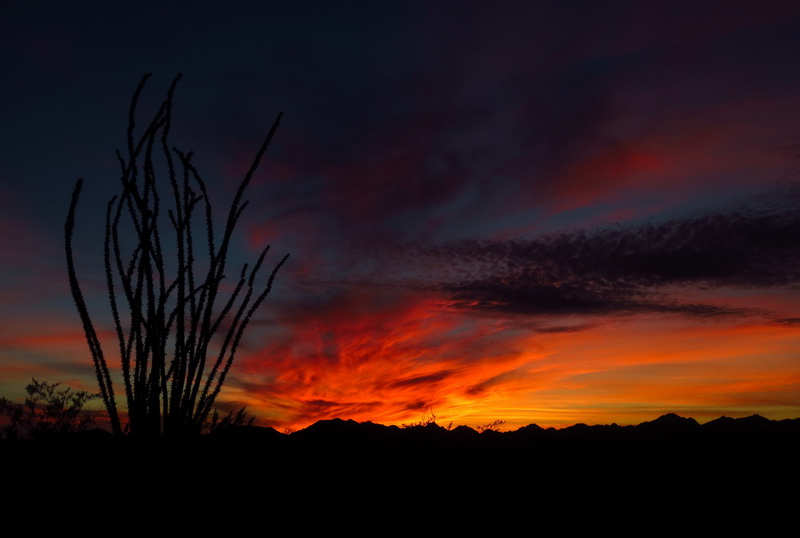
We pedaled up and over the lava flows, still pausing to look back at the ever reddening sky. Through the deeps ruts of the Pinta Sands my headlamp started dying. I followed Eszter’s rear tire as she navigated us through the maze of ruts, one of us getting stuffed off-line only occasionally.
Once we were back in the sand we felt the chance of traffic lower, spying a flat area to call home for the night. We eventually realized that the lights we were seeing in the distance was highway 2 in Mexico. I hadn’t realized that it was so close, or that it had so much traffic. The thought of the road being so close, and that we hadn’t seen anyone all day, including the border patrol, was a little unnerving. Part of me was hoping an agent would come by, not because I’d feel safer with one around so much as that I’d feel that things were more ‘normal’ since it sure seems like they patrol the Camino regularly. It seemed strange that we hadn’t seen anyone. Just a mysterious blanket in the middle of the road.
Sure enough, after a couple hours of semi-sleep, a well lit truck approached. The agent was so confused, at first just shining his lights at us. We spoke first. “Hello there!” “What, what, are you guys doing out here?” “Just spending the night, riding bikes.” “Oh, sorry, we just don’t see that much out here!” He went on to say, “You do know that there are people just a few miles that way that don’t like us very much, right?” We nodded, while thinking, “maybe they don’t like *you* very much, but I doubt they have any issue with us.” He was friendly and told us if we needed anything there was a border station just a few more miles down the road. We thanked him and wished him a good night.
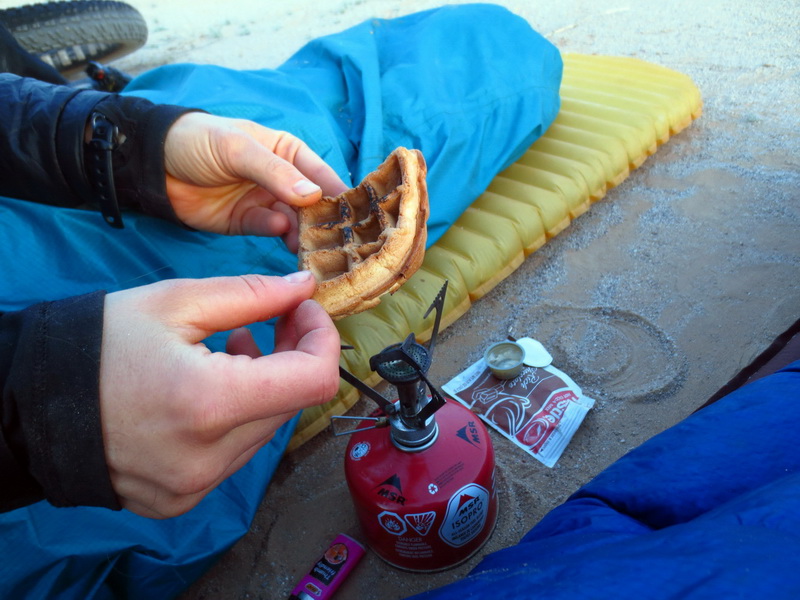
The night was otherwise uneventful, and the morning beautiful. We reheated waffles from the hotel breakfast, among other goodies. Then were on our way, back up the Camino. We passed our first campsite and got to see the rest of the Agua Dolce mountains that we had only seen by moonlight.
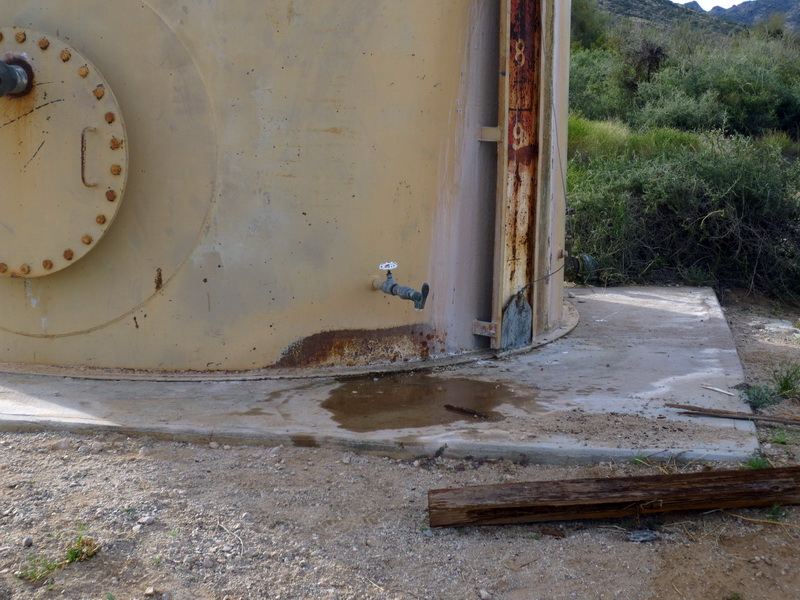
With the aid of daylight, I could see that the spigot on Papago Well appeared to be leaking. I had tried in vain to get water out of Tule Well on our first pass, but hadn’t investigated Papago. Sure enough, water came rushing out. I guess we hadn’t quite needed to carry 240 oz each. Though I certainly wouldn’t count on it for future trips.

some of the few organ pipe cacti on the route
As it was, we had plenty of water, and even a Dr. Pepper to share at the ruins of the Bates ranch house. But we were running a little light on food. Luckily it’s a pretty quick ride once you get the bulk of the climbing through Growler Pass and into Organ Pipe National Monument. That portion of road is pretty washboarded out, but felt quite a bit more smooth climbing compared to descending.
Before we knew it, we were pedaling up the highway back into Ajo. A Game and Fish officer saw us riding through town and tracked us down, wanting to hear how it went for the fat bikers. “It was awesome!” was the summary of what we told him.
And it really was. I’m so happy to have returned to the Camino, ridden it self-supported, and enjoyed lots of high quality bike touring with Ez. There really is something to this whole sand fat-touring thing.
I plan to update bikepacking.net’s route page with more info, and a suggestion for a great overnighter that I think many, many people should take their fat bikes out on.
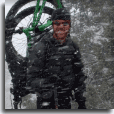


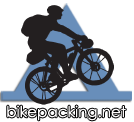
I would love to try this route on a fat bike. Any chance you’ll include water sources in your trail description? Great photos and report as always.
You should do it! I’ll include everything I know about water sources. For the loop version the Tinajas Altas are a very reliable source. The other wells seem to be hit and miss.
This looks amazingly cool, have to find a GPX for it. And gotta wait until the giant heater in the sky calms down a bit.